You’re walking along some bushes in a park, and suddenly see a tiny gray creature skittering into the fallen leaves. At first you might think it’s a rodent, but this frenetic ball of energy is actually a shrew.
While it may appear small and gray, shrews are one of the most voracious mammalian predators on the planet. And they’re abundant and widespread, found on five continents in a variety of habitats. In the United Kingdom, there are an estimated 50 shrews per hectare in woodlands, with a country-wide population of more than 40 million shrews. The northern short-tailed shrew may be the most common mammal of the eastern United States.
Soricidae, the shrew family, contains more than 385 species. Superficially, many of these species look similar, with most having pointy snouts, a streamlined body and a grayish coloration. But they exhibit a diversity of behaviors. Even though they’re common and widespread, few people see them and fewer know their crazy habits and adaptations.
Let’s take a look at just some of the many reasons to marvel at shrews.
-
Life in the Fast Lane
If you’re lucky enough to see a shrew, you’ll notice that it’s moving rapidly, with rapid, jerky movements. This isn’t because you scared it; shrews just live life fast and furious. Your most highly caffeinated, Type A colleague will appear downright slothful compared to a shrew.
While this varies among species, a shrew’s heart rate beats 800 to 1000 times per minute. The Etruscan shrew, the smallest terrestrial mammal on earth, has a heart rate that can reach 1500 beats per minute, more than any other mammal and more even than the hummingbird.
Shrews have been recorded making 12 body movements per second. (Go ahead and try to duplicate this feat). They’re in constant motion, rarely stopping to sleep. They have a high metabolism, which means they have to eat. A lot.
A shrew’s life is a constant search for prey. Many species must eat their body weight’s worth of food each day. (I advise you not to attempt this one). If a shrew doesn’t eat within a few hours, it dies. This constant need for food has led to some truly bizarre and even disturbing adaptations.
-
Watch Those Whiskers
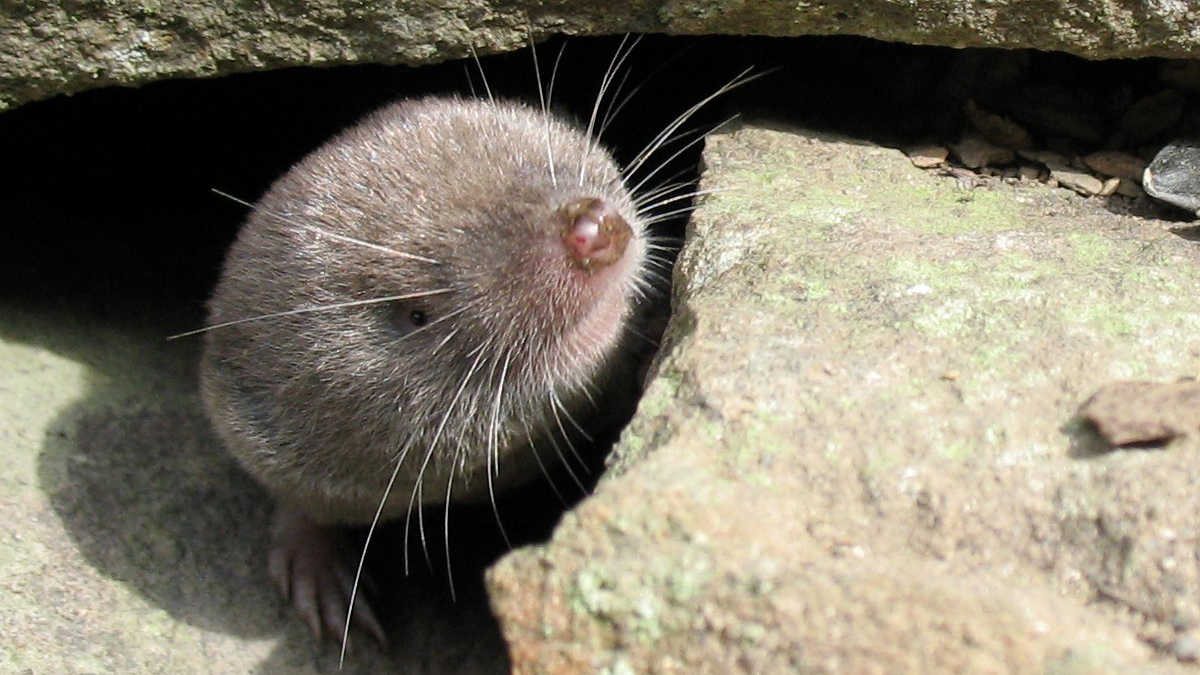
Northern Short-tailed Shrew. Photo © Gilles Gonthier / Flickr Shrews must find and subdue prey fast. They have poor eyesight and often live in thick cover filled with obstacles. How do they manage?
Many sources mention that some shrews use echolocation: they emit sounds producing sonar that helps them navigate their world (much like bats). Shrews emit a sound described as a “twitter” and it is often assumed this is used in echo-location. However, much of the evidence appears anecdotal. An article in the journal Biology Letters found “shrew-like calls can indeed yield echo scenes useful for habitat assessment at close range.”
There isn’t evidence that this echolocation is used to find prey. Instead, shrews rely on their long, highly sensitive whiskers, also known as vibrissae. According to a study published in Philosophical Transactions B, the Etruscan shrew hunts in an environment where crickets are particularly abundant. It moves its whiskers constantly – a motion called, appropriately enough, whisking – until it brushes its prey. Then it strikes quickly and with great precision.
Of course, wasting time attacking non-prey items that the whiskers brush against would burn precious energy. The researchers conducted an intriguing test:
“Experiments with dummy prey objects showed that shrews attacked a plastic replica of a cricket but not other plastic objects of similar size. Altering the shape of crickets by gluing on additional body parts from donor animals revealed that the jumping legs but not the head are key features in prey recognition.”
-
Shrew Venom, A Horror Story
You can spend way too much time on YouTube watching videos of shrews attacking mice, scorpions, snakes and other larger creatures. Spoiler alert: the shrew wins.
This is because many shrew species are venomous. Research has found that an individual shrew stores enough venom to kill 200 mice. Some shrews also use this venom for something called live hoarding.
Live hoarding sounds innocuous enough, but in reality it shares numerous plot points with that terrifying movie Hostel. Here’s how it works.
The shrew lacks hollow fangs (as in venomous snakes) but instead has a gland that allows saliva to flow with the venom. When the shrew encounters its prey – often an invertebrate, but it can also be a mouse or other vertebrate – it begins biting it, allowing the venomous saliva to flow into the wound.
For the prey, this is the beginning of a very bad day. The venom paralyzes the creature, but keeps it very much alive. The shrew can then move it to a cache, available for whenever hunting is not going so great. For an animal that has to eat constantly, this keeps a fresh if unsavory meal always at the ready.
The American Chemical Society reports that a mealworm can be kept, paralyzed but alive, for 15 days.
Shrew bites on humans are reportedly painful but fade in a few days. Be very, very glad these animals are not larger.
-
Following the Herd
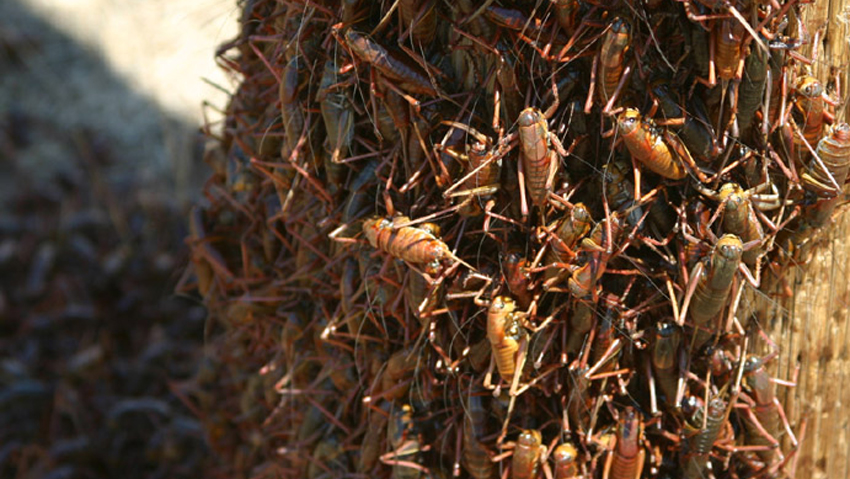
Mormon crickets in Nevada, 2006. Photo © katie madonia / Wikimedia Commons through a CC BY 2.5 license In the sagebrush country of the western United States, one species of shrews may follow the thundering herds … of Mormon crickets. Mormon crickets (actually a species of katydid) are prone to periodically have population explosions resulting in large swarms.
Vladimir Dinets, in the Peterson Field Guide to Finding Mammals, includes this intriguing description: “On arid plains these shrews follow swarms of Mormon crickets the same way Gray Wolves follow migrating Caribou herds. If you encounter a swarm, look for shrews scurrying along its tail edge.”
Dinets’ book, by the way, is like a shrew spotter’s bible, including tips on where and how to seek all the North American species.
-
Walking on Water
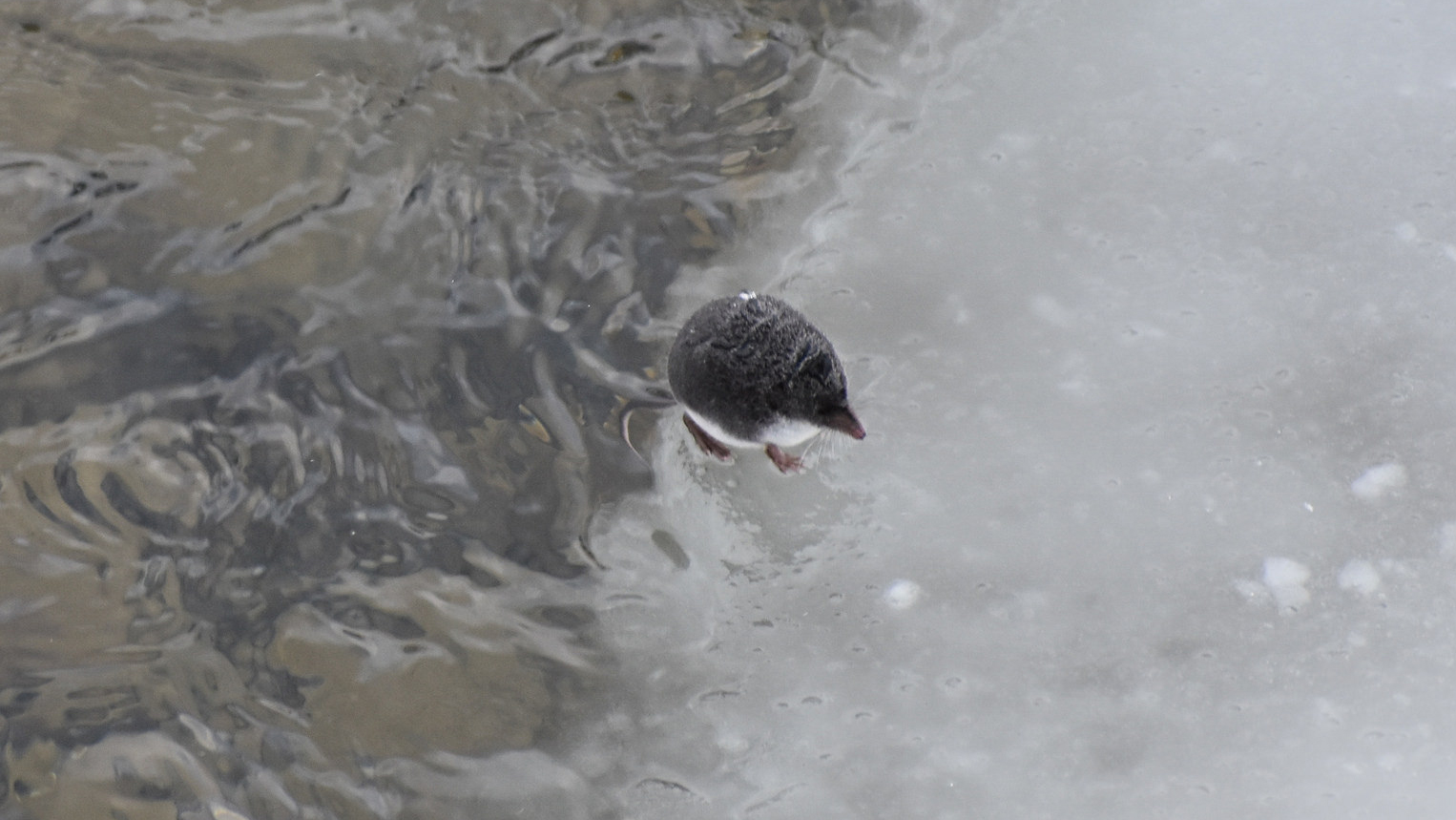
Water shrew on Pebble Creek. © NPS/April Henderson / Flickr You can find a shrew species in just about any habitat. Several species of water shrews even take to streams. The water shrew has stiff hairs on its feet that allow it to scamper across the surface of the water. Its stiff fur also traps air bubbles, allowing it to stay underwater for short bursts. It must stay in constant motion underwater, or it pops back up to the surface. It hunts caddis larvae and other small aquatic prey.
Theodore Roosevelt (yes, the president) observed a water shrew catching a minnow in North Idaho. He described it in his book The Wilderness Hunter: “It was less in size than a mouse, and as it paddled rapidly underneath the water its body seemed flattened like a disk, and was spangled by tiny bubbles, like flecks of silver.”
As a side note, Theodore Roosevelt also kept a shrew in captivity (he fed it a mouse and garter snake) and observed, wrote about and collected shrew species on his lengthy African safari. He even has a shrew species named after him. I’m not surprised that he had a love of shrews, given his accomplishments as a conservationist, naturalist and outdoors enthusiast. I wish for another politician like him nearly every day.
-
The Incredible Shrinking Brain
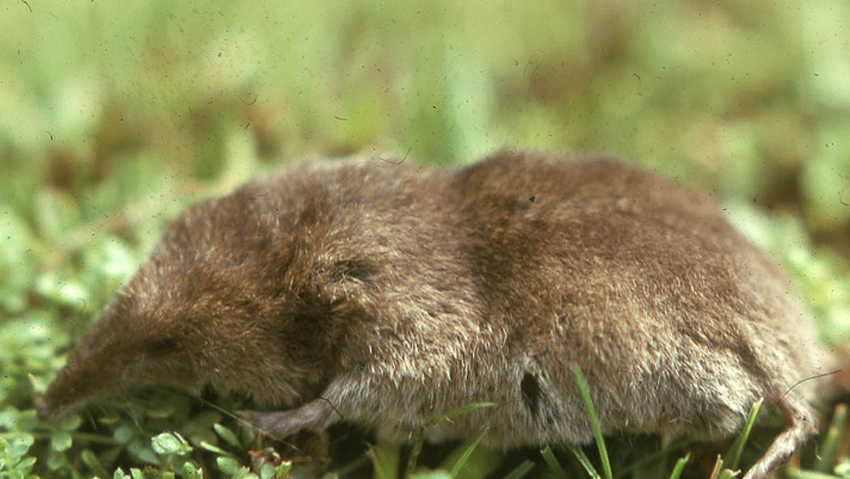
Common shrew (Sorex araneus). Photo © Dr Mary Gillham Archive Project / Flickr through a CC BY 2.0 license Many wildlife species feast and bulk up for the cold winter months. With the shrew’s metabolism, weight gain is not an option. And so at least one shrew species shrinks. A recent study, published in the journal Nature, found that in common shrews in Germany, “Their spines also got shorter, and major organs, including the heart, lungs and spleen, shrank. Even their brain mass dropped by 20–30%.”
Researcher Javier Lazaro hypothesized that “reducing their body mass during winter might increase their chances of survival, because they wouldn’t need so much food.” The brain in particular has high energy requirements, but the study could not determine if shrews experienced decreased cognitive functions.
-
Foxes Hate Them, Trout Love Them
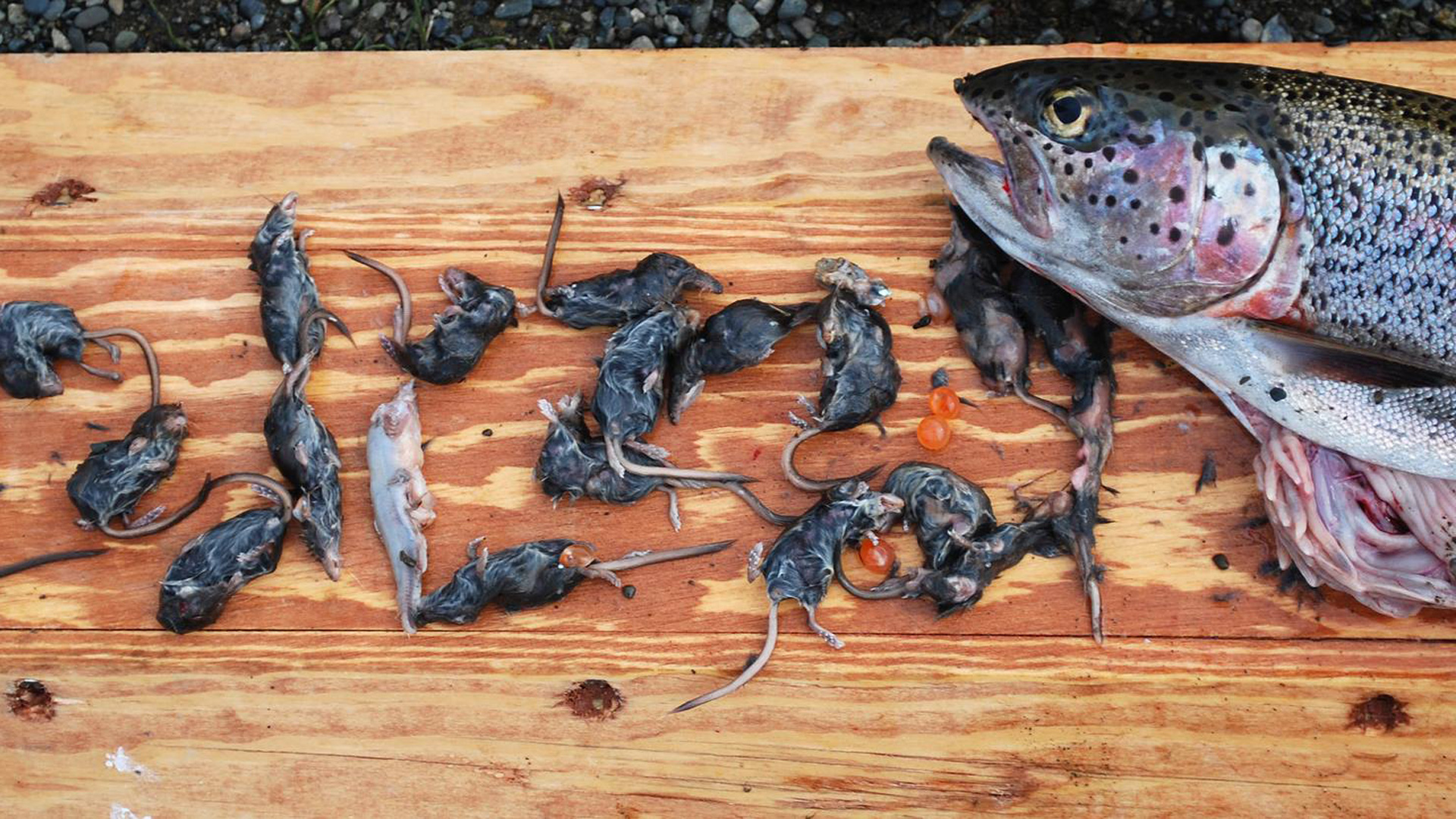
The shrew-eating trout of Togiak National Wildlife Refuge. Photo: U.S. Fish and Wildlife Service. Shrews may be fierce predators, but they’re small, which means they in turn become prey. Many mammalian predators, including red foxes, raccoons and cats, will attack them but rarely actually eat them. That’s because shrews emit an unpleasant musk that some liken to the smell of skunk.
This does not deter other predators, like owls and snakes. But my favorite incidence of shrew predation is a rainbow trout caught at Alaska’s Togiak National Wildlife Refuge that had 19 shrews in its stomach. These were not water shrews, but other species that fell into the water and became prey. You can read the full account in my previous blog.
-
Shakespeare and Shrews

Petruchio (Kevin Black) and Katherina (Emily Jordan) from the 2003 Carmel Shakespeare Festival production at the Forest Theater. Photo © Smatprt / Wikimedia Commons through a CC BY-SA 3.0 license And then there’s the literary work, Shakespeare’s Taming of the Shrew. During my Shakespearean literature class in college, my professor stated that the Bard did not refer to the literal shrew, as such a benign, inconsequential mammal wouldn’t fit the theme of the play.
As a lifelong mammal nerd, this amounted to heresy. I decided to make my final paper for the class a detailed comparison of the real shrew with the literary one. This, in retrospect, was a bit of a gamble. I relied on a store of shrew facts, many of which now appear in this blog.
As I read my professor’s comments on the paper, I could sense that she was initially annoyed at my topic, then became increasingly alarmed as she realized I was quite serious. The paper received an “A”, along with the pointed suggestion that I pursue a career in nature writing as opposed to academia.
And here I am, still sharing shrew facts.




Ohio here,
I have a shrew that lives in our garage . He is dusty dark grey and has been munching on cat foot daily for about 2 to 3 yrs now I have enjoyed his antics I watch him daily as I have a bad habit and smoke in the garage . They are so fascinating and yes constantly gathering food I have even seen him eat out of the same dish with our cat ( we have 4 ) they leave him alone . I understand now it must be the musty smell. I have tons of video he currently seems to take food to three locations? Any thoughts that this one has three diffrent family’s around garage or just sharing ??? I here the fighting sometimes high squeeks almost like yelling at each other as a warning sometime and know the location of the nest. I Give him a brake some days and put the food right next to his nest … because he dose gather allllllll day long minus a few naps !
I am not sure if we saw a shrew or vole…We regularly walk in a “tree farm” with trees now at 5′ and under. We curiously found a shrew in the upper branches of a 3′ tree…it was recently dead ; we do the walk daily. I threw the dead animal into an adjacent field . The next day, we found a dead shrew in the same tree….???So we left it there and will see if it’s there tomorrow or if a predator caught it to save it. We see night hawks in the area…now other hawks or eagles.
I had a rodent problem for years and eventually erradicated them but shrews have now moved into their holes, probably to feed off the insects of the decaying rats. Should I try to eliminate the shrews or will they keep the rats away?
Great stuff Michael
Great article. I really enjoyed reading and learning more about these creatures that I recently caught inside my home and seen for the first time in my 43 years.
Hi Matthew,
We live in Kansas. Last week my husband and I were watching a scary movie. Out of the corner of his eye, he caught a glimpse of a black oval object go under the other couch.
I shrugged it off to imagination. The next night I saw it, the high rate of speed and it was jet black led me to believe this is not a mouse. So before bed I set a cracker in front of the couch we saw it run under. The next morning it was gone. How do I get rid of it? I set 2 mouse traps. The food was gone on one of them and the trap was still set. Speedy Gonzalez the fasted mouse of all Mexico came to mind. We keep a clean house, we think it may have snuck in under the storm door when the weather was nice. How do I get rid of it?
My house somehow got infested with these lil……
And the smell is horrid.
As soon as you open the door to my home the stentch hits ya and takes your breath away.
What can i do to get the smell out.
I have to wash my clothes 3 times in order to get clean smelling.
HELPPPPP
Hi Matt,
This is an interesting read. Thanks.
A mammal with venom!
I also encountered The Taming of the Shrew in college class and enjoyed it immensely and would like to know how you compared Kate to the little critter.
I hope I am not the only commenter. Best regards.
Kirk
Nice Post. My son just sent me a picture in a text message of a couple rodents his cat deposited on his doorstep. At first I took them to be voles but on closer inspection the sharp noses spoke loudly shrew. So, I told him to give his cat a good looking over for festering swelling bites. Right away he mentioned that the cat did seem to have some issues and as a PA decided to give the cat a good look over. Next day he sent me a picture of lacerations that look like they came from a surgical scissors. That was after he thoroughly cleaned out the wounds. Yep classic shrew bit. He also reported the wounds to have a pretty fowel odor about them.
A great and wonderful piece. I would be hard pressed to describe what I liked about it most, whether it was the exposure of a magical and magnificent example of the genius that is Nature, contained in something so ordinary and commonplace as the shrew, or the idea of your final paper. Which brings me to my question-when do I get to read it? Congrats…
Thank you for your comment, Paul. I am glad you enjoyed the story. As far as my paper, I am afraid it has been lost to time. There are several papers and notebooks from that era of my life I now wish I had…
Hi, many years ago I got bitten on the side of the right foot by a shrew, and the area became itchy for years after that, and so decided to try acupuncture on it. Therapist put needles around the area and thankfully made the itch go away. However in the last three months the itch has come again, any scratching on area does not resolve it. Now that shrew bit me about 20 years ago! Any suggestions what I could do about it, it’s really irritating!
I currently have a shrew living in my house that lives on my cat’s dried food.
It often appears from behind the cooked and seems is becoming quite confident even when there are people around.
Is this normal shrew behaviour??
I walked onto my back deck in New Jersey early on a September morning, when it was still fully dark. I put the deck lights on. I soon observed a small creature jumping around in the cut lawn surrounding the deck. At first I thought it was a small frog. It repeatedly moved in wide (for it) circles, very rapidly. After making 8-10 such circles in the turf, it hid out a bit, taking a break.
At that point I soon was able to see it, identifying it as a very tiny mouse-like creature, i.e., as a shrew.
When it again activated, it circled and re-circled individual acorns (on concrete pavement) in a whirlwind at “warp speed,” moving from one acorn to another. These circles were very tight and tiny, and the speed of movement was “blinding.”
I concluded that both behaviors were designed to flush insect-prey out. But there was no success in this that I could identify.
i need to read that lit paper tho haha